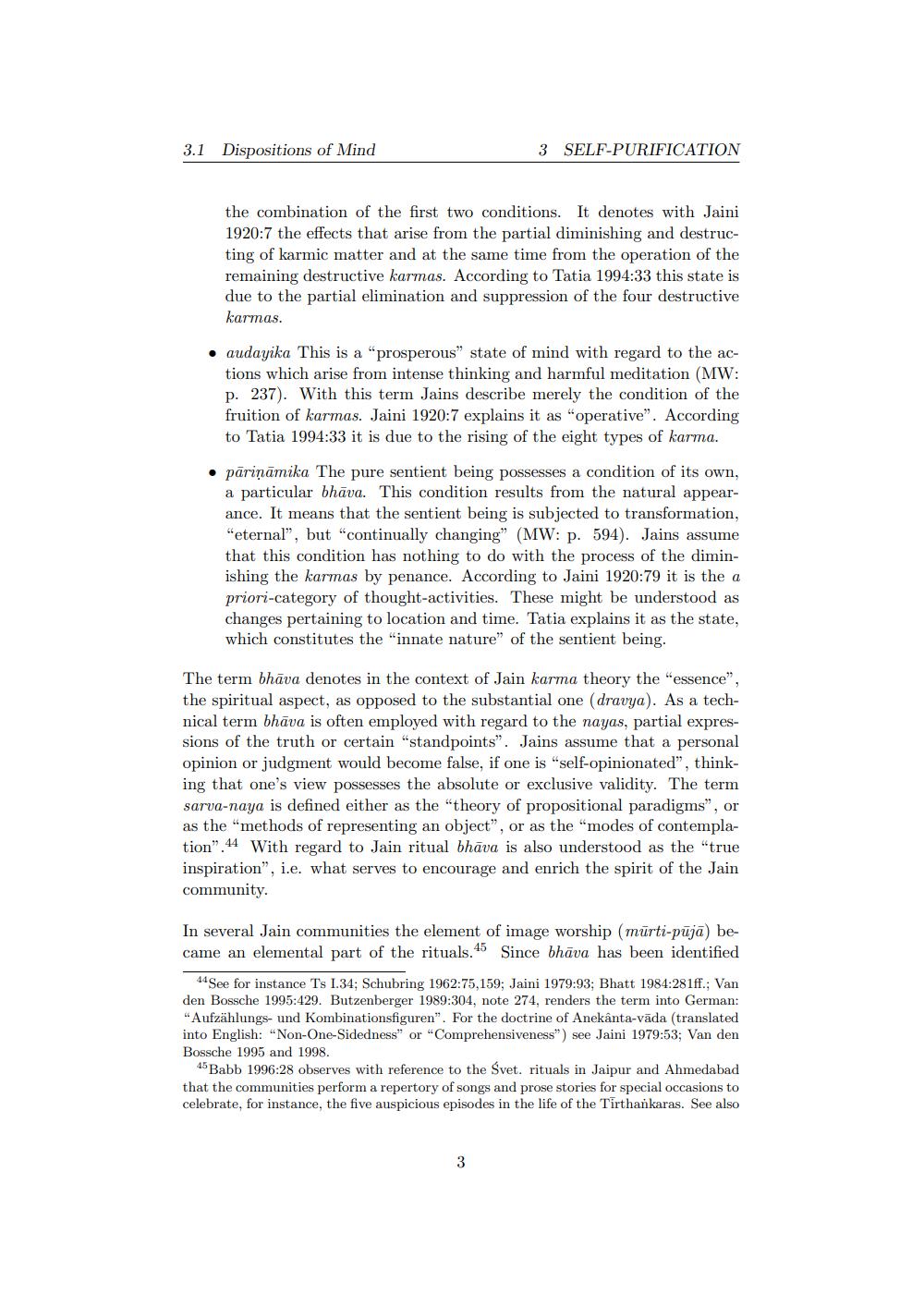________________
3.1 Dispositions of Mind
3 SELF-PURIFICATION
the combination of the first two conditions. It denotes with Jaini 1920:7 the effects that arise from the partial diminishing and destructing of karmic matter and at the same time from the operation of the remaining destructive karmas. According to Tatia 1994:33 this state is due to the partial elimination and suppression of the four destructive karmas.
• audayika This is a prosperous” state of mind with regard to the ac
tions which arise from intense thinking and harmful meditation (MW: p. 237). With this term Jains describe merely the condition of the fruition of karmas. Jaini 1920:7 explains it as "operative". According to Tatia 1994:33 it is due to the rising of the eight types of karma.
pāriņāmika The pure sentient being possesses a condition of its own, a particular bhāva. This condition results from the natural appearance. It means that the sentient being is subjected to transformation, "eternal", but "continually changing" (MW: p. 594). Jains assume that this condition has nothing to do with the process of the diminishing the karmas by penance. According to Jaini 1920:79 it is the a priori-category of thought-activities. These might be understood as changes pertaining to location and time. Tatia explains it as the state. which constitutes the "innate nature" of the sentient being.
The term bhāva denotes in the context of Jain karma theory the "essence", the spiritual aspect, as opposed to the substantial one (dravya). As a technical term bhava is often employed with regard to the nayas, partial expressions of the truth or certain "standpoints". Jains assume that a personal opinion or judgment would become false, if one is "self-opinionated", thinking that one's view possesses the absolute or exclusive validity. The term sarva-naya is defined either as the "theory of propositional paradigms", or as the methods of representing an object", or as the "modes of contemplation". 14 With regard to Jain ritual bhāva is also understood as the "true inspiration", i.e. what serves to encourage and enrich the spirit of the Jain community.
In several Jain communities the element of image worship (mūrti-pujā) became an elemental part of the rituals.45 Since bhāva has been identified
44 See for instance Ts 1.34; Schubring 1962:75,159; Jaini 1979:93; Bhatt 1984:281ff.; Van den Bossche 1995:429. Butzenberger 1989:304, note 274, renders the term into German: "Aufzählungs- und Kombinationsfiguren". For the doctrine of Anekânta-vāda (translated into English: "Non-One-Sidedness" or "Comprehensiveness") see Jaini 1979:53; Van den Bossche 1995 and 1998.
45 Babb 1996:28 observes with reference to the Svet, rituals in Jaipur and Ahmedabad that the communities perform a repertory of songs and prose stories for special occasions to celebrate, for instance, the five auspicious episodes in the life of the Tirthankaras. See also




